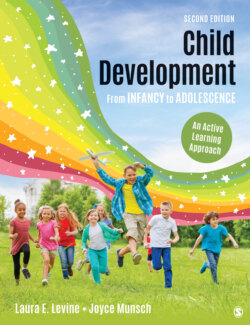Читать книгу Child Development From Infancy to Adolescence - Laura E. Levine - Страница 166
2.4 How is research on child development conducted?
ОглавлениеThe scientific method begins with observations, which generate hypotheses. After we operationalize the concepts in our hypotheses, we select a representative sample for research. Any measures we use must be reliable and valid.
Research can draw on naturalistic observation, checklists of behaviors, or self-report measures that include surveys, questionnaires, and interviews. We also gather data via standardized tests, physiological measures, archival records, case studies, and ethnography.
Experimental research design randomly assigns participants to an experimental or control group. The independent variable is the treatment given to the experimental group, after which we measure the dependent variable for both groups. If there is a difference, we can conclude the independent variable caused it. Correlational research is designed to examine the relationship between naturally occurring variables. Results are examined for the direction and the strength of the relationship, but a correlation does not mean that one of the variables caused the other.
A longitudinal design follows and assesses a single group of participants over a period of time. Cross-sectional designs assess comparable groups of participants of different ages at the same time. In a sequential design, several groups are followed for a period of time, with an overlap in the age at which one group begins the study and another group finishes it.
In interpreting study results, we must not generalize beyond the characteristics of our sample and we expect to find individual exceptions to the results. Researchers must look at both the statistical significance of the data and the effect size to determine how important the results are.
